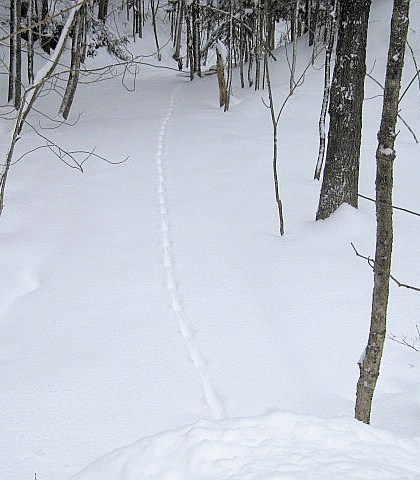March has definitely been here this year.
The daytime temperature has been in the vicinity of 35 to 45 degrees with biting wind. A foot of snow fell out of the sky a couple of weeks ago. The ice mountains at the top of my driveway, which around the end of February had started showing hopeful signs of receding, as they do every year, built back up in geological fast-forward, so my backyard once again resembles central Antarctica.
Winter is like a mean dog with its teeth in your leg that won’t let go. Starting in late February, when the sun is suddenly higher in the sky and stays there longer, the dog nods off a little during the day; but you have to keep a healthy mental distance, because at night it wakes up and growls.
March nights refreeze the mud that plagued the driveway in the afternoon. It always snows. In March 2005, more than 32 inches of snow fell on Portland, according to the National Weather Service. In 2001, 40.5 inches. In 1956, more than 46 inches. In 1993, 49. Those icy fangs do not let go.
Last year the dog fell asleep in mid-March and the temperature was in the 90s for a few days. You could see it coming: People thought — or hoped so hard they believed — that winter had left early. But a week later, I seem to recall, a pervasive sense of dejection set in when the cold nights clattered back and cranky wind snarled and snapped again at our ankles.
March is the cruelest month in this part of the world, but April can be its own cur. On April 4, 1954, it was 8 degrees in Portland, the coldest temperature ever recorded for the month. On April 27, 1964, there was a 49-degree swing in temperature. The coldest April averaged 38.4 degrees in 1943. Even in 2012, the second-warmest April on record, the mean temperature for the month was only 47. In the first week of April 1982, 15.9 inches of snow fell on Portland. And that’s in Portland, which to us up here in the woods is getting on out of the subarctic map and entering a temperate zone. Two Aprils ago, 15.4 inches of snow fell on Bangor.
When I taught at Unity College back in the last century, I remember big plans for Earth Day celebrations being driven indoors by wet, raw bags of snow falling out of cold gray skies.
Here in Troy, as my ultra-reliable plow guy Jason (who lives just across the pond in Unity Plantation) observed, “You guys seem to get more snow than everybody else.” In the big storm in February, when towns were reporting snowfall in the 20s of inches — which is enough already — I measured 30 inches of new snow straight up on my deck. In the insomniac dog winter of 2011, clawlike plates of ice in the driveway seemed to be permanent topological features by late April and shreds of our Antarctic mountains held on into the first week of May.
“Though the frost is nearly out of the ground,” Thoreau wrote in his journal on March 30, 1852, “the winter has not broken up in me. It is a backward season with me. Perhaps we grow older and older till we no longer sympathize with the revolution of the seasons, and our winters never break up.”
My way of saying the same thing, 27 Marches further on than Thoreau was when he wrote this at 33, is that winter’s teeth do not let go willingly, hereabouts. As someone told me years ago, God invented March in Maine so people who don’t drink know what a hangover feels like.
Or a mean dog who just won’t go to sleep.
Dana Wilde lives in Troy. His writings on Maine’s natural world are collected in “The Other End of the Driveway,” available from Booklocker.com. Backyard Naturalist appears the second and fourth Thursdays of the month. You can contact him at naturalist@dwildepress.net.
Send questions/comments to the editors.




Success. Please wait for the page to reload. If the page does not reload within 5 seconds, please refresh the page.
Enter your email and password to access comments.
Hi, to comment on stories you must . This profile is in addition to your subscription and website login.
Already have a commenting profile? .
Invalid username/password.
Please check your email to confirm and complete your registration.
Only subscribers are eligible to post comments. Please subscribe or login first for digital access. Here’s why.
Use the form below to reset your password. When you've submitted your account email, we will send an email with a reset code.